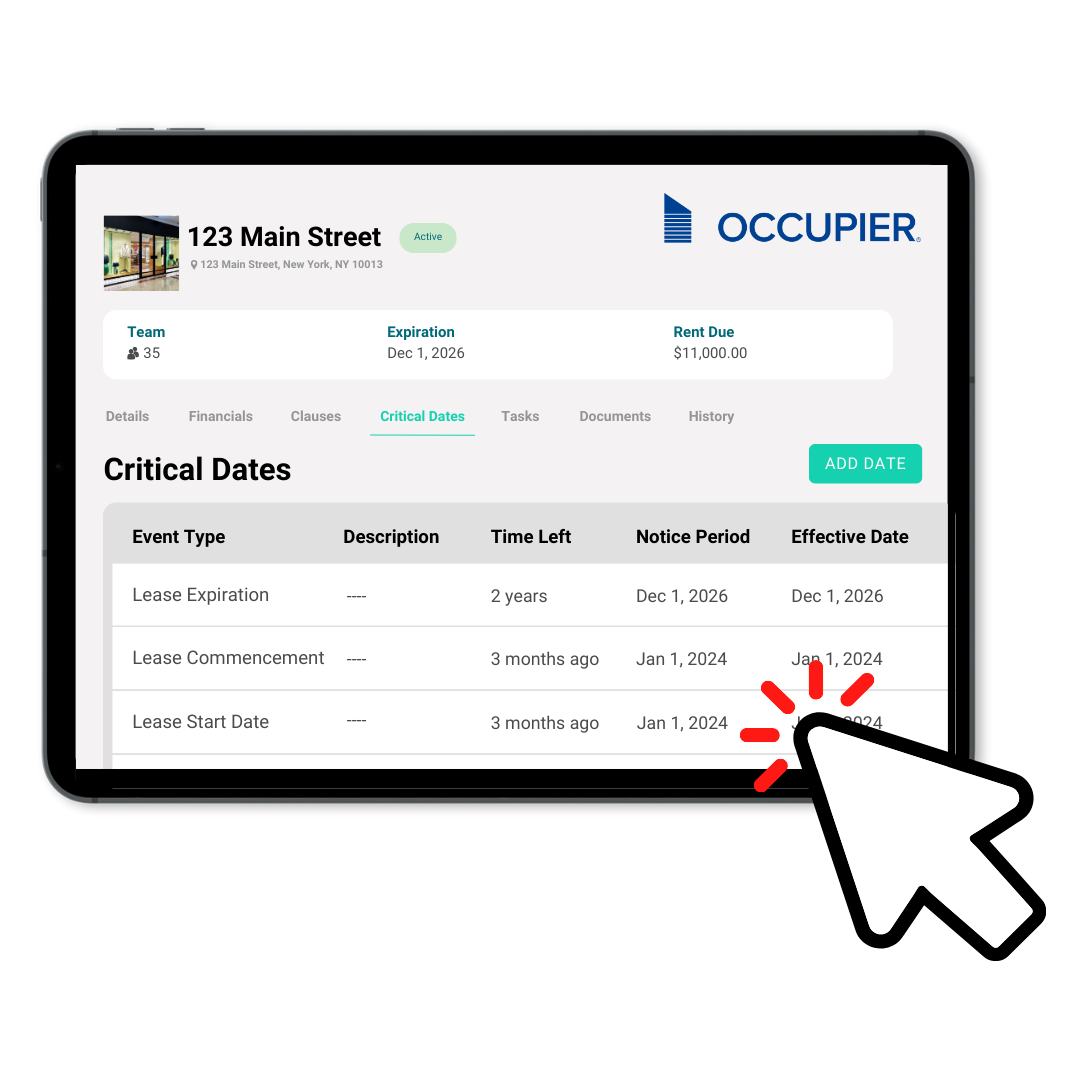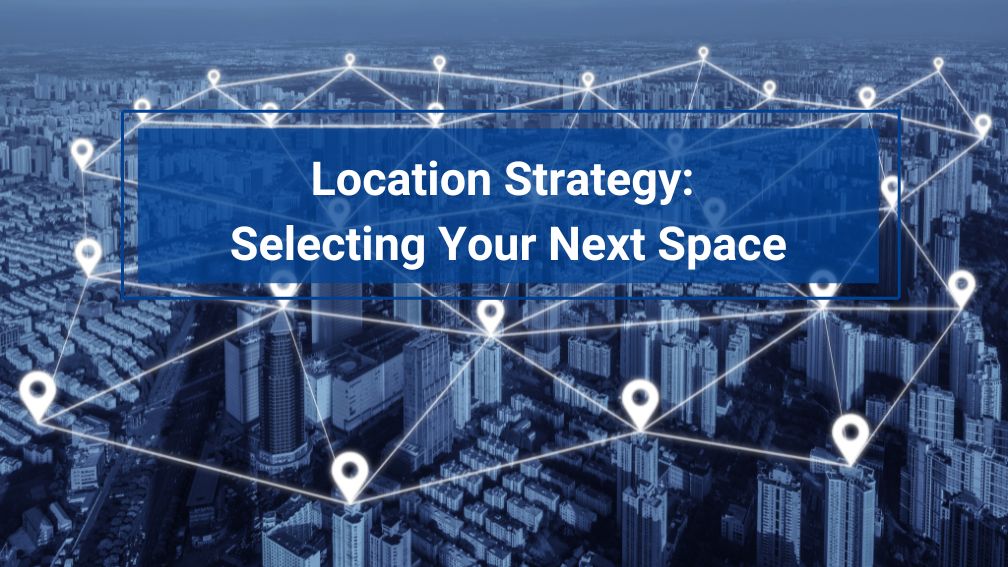Location Strategy: Selecting Your Next Space
Last Updated on July 28, 2025 by
In commercial real estate, even the most innovative businesses can falter if they choose the wrong location. Your business location strategy plays a critical role in how well your space supports operations, attracts talent, and serves customers. The right location decisions drive growth, while the wrong ones can hinder productivity, inflate costs, or impair customer access.
So how do you identify the optimal location—the one that aligns with your business model, supports operational goals, and scales with your vision? It starts with a structured, data-informed approach to site selection, combining on-the-ground insights with strategic foresight.
Whether you’re planning a new office, evaluating alternative locations, or leading a relocation initiative, this guide will help you refine your company’s location strategy and make more informed real estate decisions.
Why Location Strategy Is a Business Strategy
For many commercial tenants, real estate represents the company’s largest expense after payroll. Choosing where to operate isn’t just a facilities issue—it’s a decision that influences every part of the business: talent acquisition, supply chain, customer experience, and cost management.
An effective location strategy supports your overall corporate strategy and helps drive efficiency across your portfolio. A misaligned site can disrupt workflows, increase overhead, and reduce operational agility. Conversely, selecting the right specific area can unlock access to new customers, reduce transportation costs, and enhance your employer brand.
Location also shapes your positioning in the market—especially in sectors like retail, professional services, tech, and manufacturing. The stakes are high, and the selection process deserves thoughtful planning.
5 Core Elements of Strategic Site Selection
Let’s explore the key dimensions of a strong location analysis, tailored for commercial tenants managing multiple sites or expanding into new markets.
1. Geographic Analysis
Start by evaluating different regions, urban areas, and cities where your business can thrive. A thorough location analysis considers population density, income levels, mobility trends, and traffic patterns—but also macro factors like globalization, international expansion, and shifts in where work is done post-pandemic.
Use tools like Geographic Information Systems (GIS) to identify trade areas with untapped demand or strong alignment with your customer base. Some companies now explore North America, Latin America, Asia Pacific, and New Zealand in their location alternatives—especially in light of global talent markets and digital infrastructure.
Zoom into the neighborhood-level location selection process to validate whether a site meets your operational and strategic objectives. A bustling downtown block might appear attractive, but if public transportation access is limited or the labor availability is thin, it may not support long-term success.
2. Facility Analysis
Every site has physical constraints and operational implications. Evaluating existing facilities, production facilities, or suitable sites includes both quantitative and qualitative review. Does the building support your team’s workflow? Can it accommodate your expected production volume or evolving headcount?
For process-driven or logistics-intensive businesses, proximity to suppliers, transit hubs, and natural resources plays a significant role in determining relative distances and logistics costs. For knowledge-based businesses, building layout, amenities, and visibility matter more.
Examine whether the space can scale as your team grows. Can it support additional subsidiaries or retail stores in the future? Is there room to build out additional capacity? Do developers offer tenant improvement allowances or other incentives to offset construction costs?
Also factor in aesthetics, signage visibility, and compliance with zoning or operational regulations. These intangible costs, while harder to quantify, can impact branding, culture, and your team’s ability to work efficiently in the space.
3. Target Audience & Market Segmentation
Your location strategy must align with your customers’ behaviors and expectations. A detailed understanding of your target audience, purchasing habits, and mobility patterns is critical.
Evaluate where your customers live, work, and spend their time. Are they primarily commuters who rely on mass transit? Do they frequent urban areas or more suburban centers? Use social listening, CRM data, and market segmentation tools to map out potential markets and identify gaps.
In retail or service-oriented sectors, proximity to other destinations and lifestyle anchors (gyms, restaurants, coworking spaces) can enhance visibility and foot traffic. For corporate offices, alignment with top talent and a desirable local market is often more important.
If your audience is expected to shift—due to remote work, demographic migration, or job postings in larger cities—your location decisions must reflect that future landscape.
4. Competitive Analysis
Understanding the competitive landscape helps determine if a given area is oversaturated or ripe with opportunity. Analyze where competitors are thriving, and why. Are they benefiting from regional incentives? Do they have an edge due to labor productivity or existing infrastructure?
Proximity to competitors isn’t always a negative. Co-location can increase awareness and create shared customer ecosystems. But if your business model requires differentiation, you may want to avoid highly competitive corridors and instead explore alternative locations with lower saturation.
At the same time, evaluate the labor force and Labor analysis in each region. Consider both cost and availability. Some locations offer a high-skilled workforce but at a premium. Others may provide lower-cost options, but lack the depth needed to scale. Factors like knowledge transfer, workplace culture, and relative distances between operational teams play a significant role in execution success.
5. Financial Analysis
Now it’s time to crunch those numbers! Consider all the costs associated with each potential. Finally, conduct a comprehensive cost-volume analysis to determine the lowest total cost of operation—not just the lowest cost of rent. This includes:
- Transportation costs to and from suppliers, clients, or regional hubs
- Taxes, utilities, insurance, and potential incentive packages
- Renovation budgets, maintenance projections, and escalation clauses
- Staffing costs based on local wage standards and hiring competition
- Long-term lease flexibility, lease renewal options, and capital expenditure forecasts
Use tools like Locational break-even analysis to project ROI over time. Understand the role of operating policies, regulations, and how each location alternative aligns with your company’s operational priorities.
Sites that appear affordable on paper may come with high intangible costs—like inconsistent service, inefficient layouts, or an inability to attract talent.
Check All the Boxes Before
You Sign the Lease.

Connecting Location Strategy to Lease Management
For commercial tenants managing multiple existing locations, real estate decisions rarely exist in a vacuum. Your location strategy should be closely integrated with your lease data, portfolio reporting, and internal stakeholders.
Centralized lease management software can support this process by:
- Mapping location alternatives to cost benchmarks and historical performance
- Automating critical date tracking for leases under review or near expiration
- Helping your team assess closing locations or repurposing underused space
- Providing visibility into your operating costs across various locations
A digital solution also enables agility—essential when evaluating real estate options across several points globally. Whether you’re expanding into Silicon Valley or consolidating in New York, the right platform supports smarter location decisions at scale.
Aligning Vision With Action
Your business location strategy is more than a search for space—it’s a decision that shapes your future. It’s where your corporate goals, team culture, and operational strategy intersect.
Whether you’re opening a new regional hub, expanding into new markets, or evaluating a manufacturing facility, your location decision must reflect long-term thinking. The right choice delivers a competitive advantage, increases ROI, and positions your organization to grow—confidently and efficiently.
So, as you plan your next move, consider more than square footage. Think about the strategic fit, the long-term impact, and how it ties back to your broader vision. With the right tools, insights, and support, you won’t just find a space—you’ll find the right place to thrive.

Product Tour
Take a self-guided tour and see how the fastest-growing commercial tenants leverage Occupier for lease management & lease accounting.
